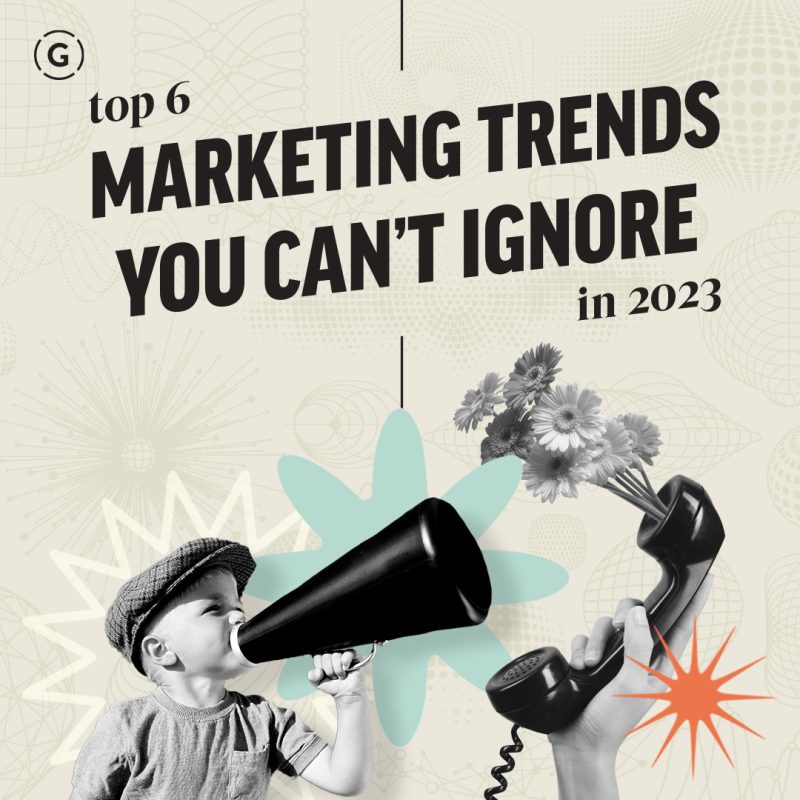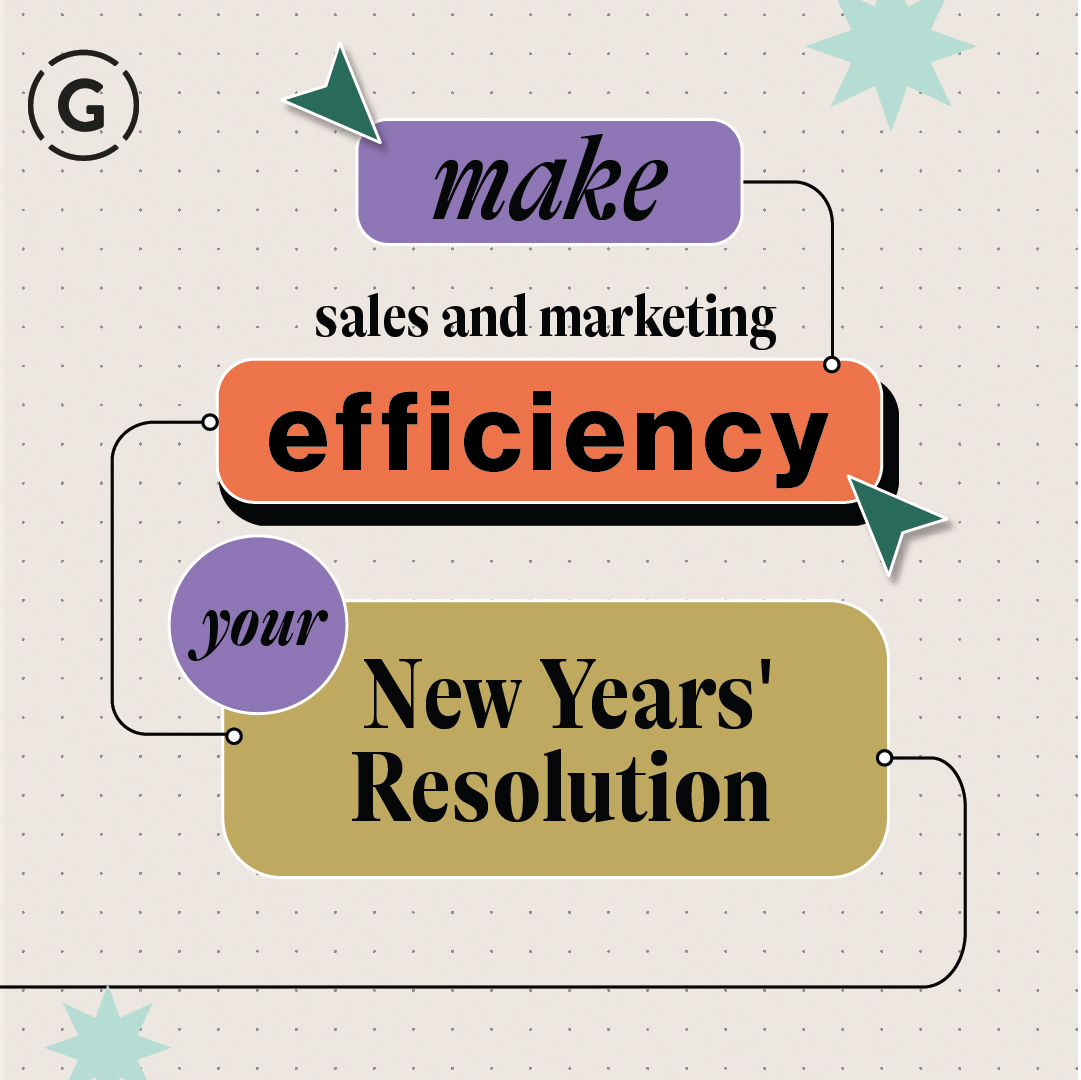Right now, our clients, like marketers the world over, are in the throes of 2023 planning. But you can’t make solid plans for the future until you first have a sense of where the world is heading. This year, with continued economic uncertainty, a fluctuating job market, and massive shifts in the tech industry, the future seems more unpredictable than usual.
Gigasavvy’s Strategy Team has been keeping on top of changes in the marketing landscape over the last year, and has compiled a list of the 2023 marketing trends we see on the horizon. Here are our Top 6 up-and-coming marketing trend forecasts, and our recommendations on how to take advantage of them.
1. Privacy Restrictions Will Lead to Creative Solutions
It’s been a long time coming, but the age of privacy is here. With Google planning for full cookie retirement in 2024, advertisers will spend 2023 finalizing their preparations for the change, and the effects that will be felt on each channel and platform.
The reality is that consumers have become savvy about their privacy, and they expect brands to respect their demands. And while many companies have been preparing for this marketing trend by spending these last few years building databases of first party data for direct-to-consumer advertising, there’s also a creative side to the story.
Rather than finding new ways to be invasive (are you getting way more SMS ads, too?) brands are thinking about the value they’re providing their customers — and that includes in terms of their content. This year, companies will think about everything through this lens. Is branded content truly entertaining on TikTok? Are all messages relevant in contextual ad placements? And ultimately: do brands really understand what their customers care about?
Privacy aside, there is a larger consumer trend toward an aversion toward invasive advertising in general. The more intrusive the ads and the less relevant they are, the more likely consumers are to opt-out, turn on ad-blockers, or just ignore them. In 2023, brands will spend more time considering customers’ actual wants and needs in order to avoid the dreaded skip button.
2. Brands Will Rely on Richer Storytelling
As marketers struggle to respond to the ever-tightening restrictions on access to personal data noted above, many are coming to the realization that they need to relook at the way they speak to their customers. In the coming year, brands’ focus will shift to the quality of the message, versus the quantity of the impressions.
It’s becoming clear that, in our bid to connect to everyone conveniently, many of our so-called “connections” have lost their sense of richness and authenticity. As performance marketing teams focused exclusively on algorithms and KPIs, continually A/B testing and optimizing the color of CTA buttons or the arrangement of captions in short copy blocks, they sometimes allowed data to take them away from the bigger picture.
Now, as a result, social media is seeing a reckoning that most of us never would have imagined a few short years ago. Although these platforms are still a part of consumers’ daily lives, people are starting to rebel against the constant bombardment of targeted advertisements, and are actively seeking out content that is more authentic.
Fortunately, most companies and brands are rooted in some original purpose that is deeper than quarterly earning projections. In a new marketing trend that we fully appreciate, marketers are now resurrecting these original brand principals, dusting them off and realizing they can, and should, still stand on them.
In 2023, we will see brands focus on weaving these brand narratives into their advertising campaigns with more impactful creative. With this “storyselling” approach, brands will seek to entertain, inform, delight and create memorable experiences with their audiences across any platform, so that they can inspire support and spur their consumers to take action.
3. Social Media Content Strategies Will Shift
This story-driven content approach will also extend to organic and paid social media content. While in year’s past, social media trends marketing relied primarily on bold colors and highly graphic stills to stop the scroll, next year, social media platforms will increasingly reward video content.
To be successful, marketers must adopt a “video-first” approach, in the same way that UI/UX design teams had to shift to a mobile-first website strategy in the last decade. Although TikTok recently added Photo Mode to post carousels, it is still largely a video sharing platform, and all of the main social media platforms are currently rewarding video content, making stories increasingly prevalent.
As video content is being prioritized across the board, platforms are now also accepting longer videos. While at one time video lengths often were capped at 15-30 seconds, platforms will now accept videos that are several minutes long. In 2023, brands will leverage these options for rich brand storytelling that varies in length for every stage of the customer journey, whether the videos are live or pre-recorded, whether they’re posted in profiles, feeds, stories, or reels, and whether they live on TikTok, Instagram, YouTube or Facebook.
This list of platforms, and the way the list is prioritized, is also going to continue to shift in the coming year, as new platforms continue to crop up, new features continue to be added to existing platforms, and Elon Musk continues to make unpredictable proclamations. Marketers will have to be nimble, planning their content in terms of audience targets and customer journeys, then placing it wherever it will be seen.
4. The Media Mix Will Be More Responsive
The need for an agile marketing approach has never been more real. The last year has seen drastic and frequent changes in digital marketing, causing a lot of marketers to have to rewrite their playbooks or suffer dips in effectiveness. Just as both Meta and Twitter have ended 2022 in major layoffs and general chaos, we expect additional changes in the marketing landscape in 2023.
Next year, media and marketing trends will continue the constant state of change, forcing marketers to stay vigilant in order to stay relevant. Strategies will need to remain fluid to accommodate sudden changes in trends and platforms, and marketers will have to train their teams and their C-suite to stay open-minded and flexible.
Consider the ever-increasing need for more video content. Social platforms have spent 2022 chasing each other’s success: think of the copy-cat strategies that Instagram has adopted to follow TikTok, and TikTok’s adoption of BeReal’s style. Each evolution has required a completely new content strategy to stay relevant.
On the other hand, it might be time to double down on more traditional forms of advertising. Think about ad-supported streaming platforms. Despite previous trends to block or avoid ads, ad-supported video platforms have been growing faster than subscription-based platforms, and we expect that marketing trend to intensify with continued economic uncertainty. This opens the door back up to more traditional :15 and :30 spots.
As questions about the future rule the day for consumers, marketers will need to keep their teams and their strategies more flexible than ever.
5. Creating More Seamless Customer Experiences
Marketing is no longer just about trying to convince people to buy something from your company. Now, it’s all about providing the best all-around customer experience (CX). In a world of endless choices, consumers expect brands to care about them through every step of the decision making process. In 2023, delivering a customer-centric experience will go from “nice to do” to “need to do” marketing trend.
So what makes a good CX? Consumers say efficiency, convenience, knowledgeable (and friendly) customer service, and easy payment options influence their buying decisions.
Brands that make it easy for shoppers to buy from them will often win their business. 73% of people say that customer experience is an important factor in their buying decisions, yet only half the consumers think businesses are providing a good experience.
To meet these customer demands, in 2023 brands will focus on incorporating personalization, updating technology, and creating an intuitive customer experience at every online and offline touchpoint. These all may seem like arduous tasks, but not doing so may cost returning (and new) customers. Management experts Bain and Company say even a 5 percent boost in customer retention increases profit by 25%.
Not all of this happens online. Companies learned the cost of having unhappy employees during the Great Resignation. To make sure offline experiences match the expectations set by online advertising, brands will coordinate their efforts among sales, marketing, and customer service teams to deliver an exceptional customer experience. In 2023, more employees will be given the tools they need to be successful and rewarded for following through. Brands will invest in their teams as a way to invest in their customers.
6. Responsible Consumerism Will Become More Prevalent
Consumerism is changing. It’s no longer as simple as creating a great product that will attract customers. Now, consumers also care about the how, why, and where your product is created. How does it support the local economy? How does it positively (or negatively) impact society? How does it impact the environment?
Responsible consumerism is nothing new. But each year consumers care more. Research shows that consumers are up to six times more likely to purchase products from a brand with a strong purpose. It’s more than buzz; brands need to live and breathe their efforts.
In 2023 brands will spend more effort to find out which causes resonate with their audiences and rally around the single purpose that serves their interests and the greater good. It doesn’t have to be complicated. Companies can differentiate themselves and build brand equity by identifying ways to better their communities in an authentic way.
Beauty giant Coty is committed to “make over the world of beauty.” The brand leads with this purpose to ensure that inclusivity and sustainability is kept in mind with every business decision. To prove it, Coty releases an annual Sustainability Report, which outlines the progress made to advance the company’s sustainability strategy. In addition to programs to reduce packaging waste, they include updates on inclusivity strides, such as equitable pay for similar roles in performance, regardless of gender and the launch of a global gender-neutral parental leave policy.
Brands that are hands-on with diversity and inclusion provide a welcoming environment for consumers. In 2023, brands will need to hold themselves accountable and back up their efforts with real results.
At the End of the Day, Authenticity Will Win
In short, companies who live and serve their customers authentically will be positioned to win in 2023. Customers have gotten wiser to brands with slick social media accounts that are not backed by any real substance, and have become suspicious of brands which do not seem to have a real story to tell.
Every major marketing trend we see for 2023 can be addressed by aligning to an authentic brand purpose, building a customer experience that delivers on that purpose, and sharing it with brand storytelling that resonates with what audiences need.
As a brand strategy, content creation and creative agency that is passionate about helping clients amplify their message and achieve success, Gigasavvy keeps tabs on marketing trends throughout the year to effectively guide our clients. Contact us for help with capitalizing on this year’s marketing trends.



